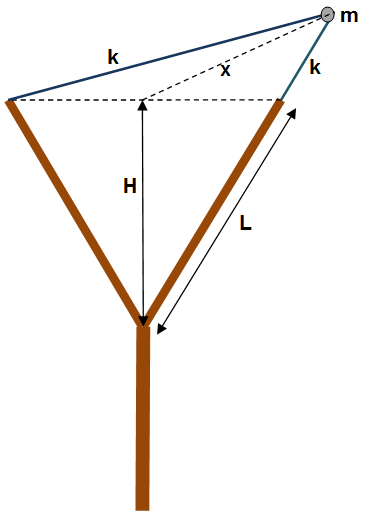Or search by topic
Number and algebra
Geometry and measure
Probability and statistics
Working mathematically
Advanced mathematics
For younger learners
Slingshot



A slingshot is a small projectile weapon which consists of a Y-shaped frame held in one hand, with two rubber strips attached to the uprights.

Rubber strips obey Hooke's law which says that when a rubber strip is extended by a small amount $\delta x$, the force it exerts is found to be $F = k\delta x$ where $k$ is a force constant.
Suppose that you want to shoot a stone of mass $m = 50\textrm{ g}$ such that it will go to the river which is at a distance of $50$ meters. Moreover, it is given that $L = 12\textrm{ cm}$, $H = 10\textrm{ cm}$, $k = 200\textrm{ N/m}$ and $g = 9.81\textrm{ m/s}^2$.
How much do you need to extend the strips (i.e. find $x$) in order to make a shot into the river if the stone is fired at an angle of $45^\circ$ with the horizontal and the length of the unstreched strip is less than $\sqrt{L^2 - H^2}$?
You may also like
Lunar Leaper
Gravity on the Moon is about 1/6th that on the Earth. A pole-vaulter 2 metres tall can clear a 5 metres pole on the Earth. How high a pole could he clear on the Moon?
High Jumping
How high can a high jumper jump? How can a high jumper jump higher without jumping higher? Read on...
Escape from Planet Earth
How fast would you have to throw a ball upwards so that it would never land?

